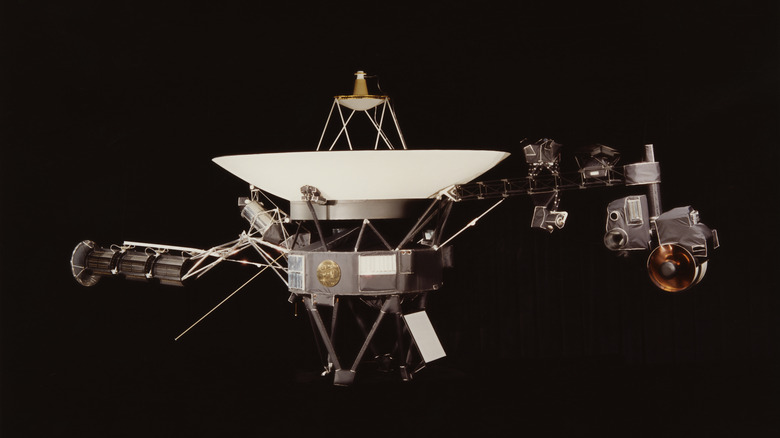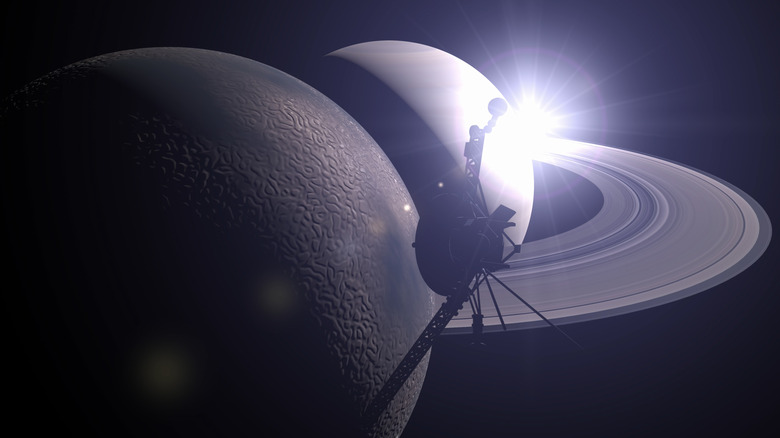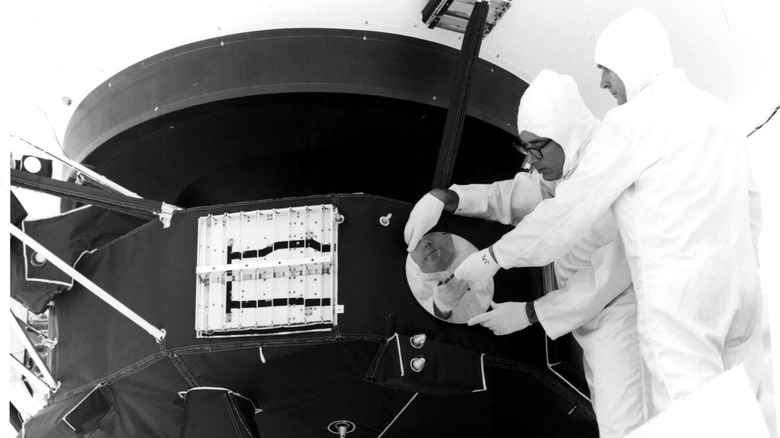How Far Away Is Voyager 1, The Most Distant Manmade Object From Earth?
We may receive a commission on purchases made from links.
Voyager 1 was launched into space in 1977 and has been on a one-way journey ever since, pushing the boundaries of how far a machine built by human hands can travel. Launched from Florida like most NASA craft, Voyager 1 is now over 15 billion miles away from Earth, which means a 23-hour wait for radio signals to travel to and from mission control. The only other man-made object nearly that far away is its sibling, Voyager 2. For context, 15 billion miles is equal to more than 31,000 round trips to the moon.
Both Voyagers are still moving quickly away from the Sun and into the cold, silent emptiness of interstellar space. Voyager 1 is traveling about 38,000 mph to the north (relative to the sun) and Voyager 2 is moving about 34,000 mph in the opposite direction. In 2012, Voyager crossed the heliopause (the outermost part of our sun's radioactive zone) and became the first object made by humans to reach interstellar space. Despite the vast distance, Voyager 1 continues to gather data and send it back to Earth. These fading whispers travel light-years across the cosmic void, representing postcards from the realm of the unknown and unseen.
How much closer is Voyager 2?
If Voyager 1 is the express bus to the outer reaches of space, Voyager 2 is the intrepid explorer that took the scenic route. Launched about two weeks earlier than its lower-numbered brother, Voyager 2 is currently a few billion miles closer to us thanks to its different itinerary. Instead of heading straight for the far reaches of space, Voyager 2 first toured Jupiter, Saturn, Uranus, and Neptune, becoming the only spacecraft ever to visit all four gas giants.
As of this writing, Voyager 2 is around 12.9 billion miles from Earth. It crossed into interstellar space in 2018, around six years behind its sibling, and it's still sending back readings from a different slice of the cosmic pie. While the two probes drift in opposite directions — Voyager 1 to the north of the solar plane and Voyager 2 to the south — their missions are still united. They're mapping the unknown and doing science from places no one has ever been. NASA was even able to xtagstartza href="https://www.slashgear.com/1611283/how-nasa-fixed-voyager-1-from-15-billion-miles-away/
What is the purpose of Voyager 1?
Voyager 1's mission was to capture the outer reaches of our solar system up close, and breaking distance and longevity records is just a byproduct of its success. In its early days, Voyager delivered breathtaking images and valuable scientific data from Jupiter and Saturn, including our first detailed look at the rings around Saturn and the gnarly weather conditions on its largest moon, Titan. Those flybys alone were worth the trip, but the spacecraft had more to give. After it completed its tour of the planets, Voyager 1 became a pathfinder into unexplored space. The probe continues to send back important data, giving us an insight into the mysteries of the galaxy we can't get from terra firma.
The two Voyager spacecraft are also ambassadors from our planet and its people. The Golden Records on each Voyager carry a series of multilingual greetings, sounds from Earth, and music from Bach to Chuck Berry. That makes Voyager 1 more than just a robotic explorer; it's a representation of humanity carrying the message "We were here" to anyone we might be sharing the universe with. If you're curious about Voyager's message, Amazon sells print and audio CDs of Carl Sagan's Murmurs of Earth, a chronicle of the golden record project with samples of some of the messages it carries.
When will Voyager 1 stop transmitting information back to Earth?
Despite their nearly 50 years of operation, the Voyager crafts aren't meant to carry on forever. Each one runs on a radioisotope thermoelectric generator (RTG), a nuclear battery that slowly loses power over time. Every year the Voyagers lose about 4 watts of capacity, and someday the groundbreaking Voyager 1 mission will come to an end. To stretch the mission of both Voyagers as long as possible, NASA has been carefully switching off instruments one by one, starting with heaters and moving on to scientific tools.
Voyager 2 started powering down devices back in 2020 since it's carrying one more sensor than Voyager 1. Right now, they're both running on just a few key instruments, prioritizing data from the interstellar environment. The current estimates are that scientific instruments will probably go dark sometime in 2025, but the two spacecraft could still send back proof-of-life signals until 2036.
Even after they go silent, both Voyagers will keep flying. Voyager 1 is headed toward the constellation Ophiuchus, while Voyager 2 is coasting toward a small star in Andromeda. In about 40,000 years, each will pass within a few light-years of these interstellar targets. They won't see anything. They won't stop. But they'll be there drifting through the dark, carrying echoes of who we were to potential distant neighbors.



